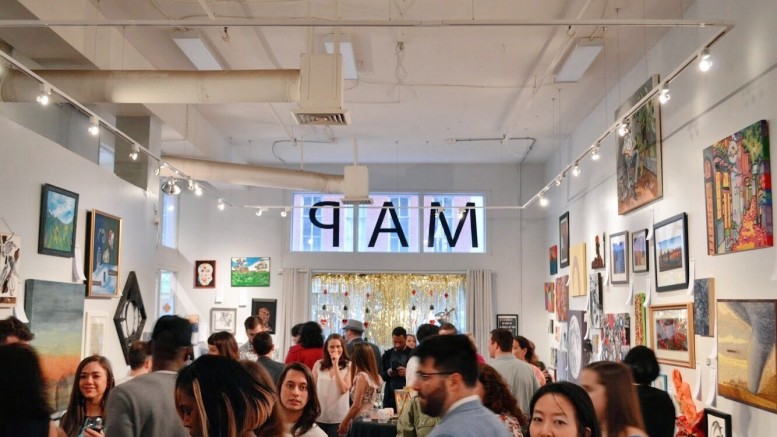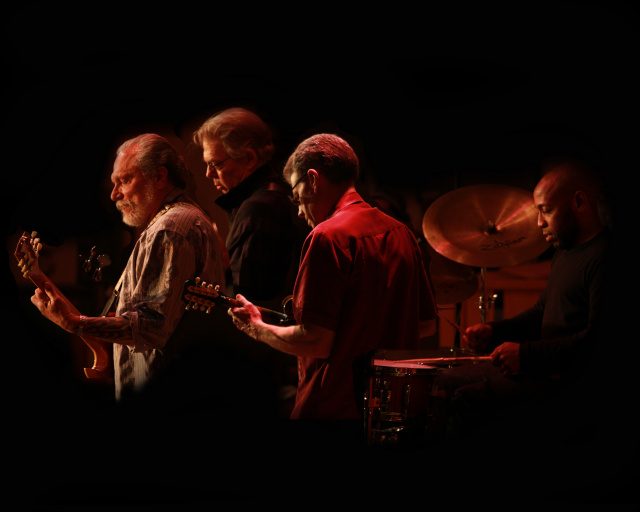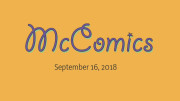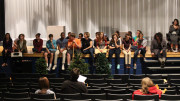The power of art can be monumental, but finding a way and a place to personally express yourself can be difficult. Maryland Art Place, a nonprofit gallery in Baltimore, is helping solve that.
“Art transcends other means of communication in terms of accessibility and articulation,” said Maryland Art Place Program Manager and Registry Coordinator Caitlin Gill. “For example, it is easier to visually express complex ideas or feelings than it is to verbally express them. I think a lot of that has to do with the fact that a visual vocabulary is universal whereas other means of expression can be limited. Therefore, due to the nature of art, I feel that it is positive in that it isn’t inherently exclusive; anyone can appreciate art. This is positive because, from a Western perspective, we are very divided. I think art can be unifying. This translates on an international, national, regional, community, and individual level.”
MAP uses its resources to help up-and-coming artists merge themselves into the contemporary art scene. Their annual spring benefit Out of Order, or OOO, is one such resource. This year was their twenty-second annual event with a second year addition of a youth show called KidOOO.
At OOO, any artist may come and pay a small submission fee of $10 to hang their artwork anywhere in the gallery. This year, close to 300 participants came to install their work: people who consider art as their life and career choice, people who love art but now only do it as a hobby, parents, college students, and the homeless. Everyone is equal, no matter experience or artistic standing.
“I think the only way art can do its job is by being seen — otherwise, it’s not fulfilling its purpose,” said Gill of the visual arts. “Small scale, local artists I find tend to be minority groups, women, people of color, youth, the elderly, people who make up society yet are excluded from it. These artists are important to provide platforms for because their invisibility in society is problematic. We don’t want cultural producers to be invisible. It’s a form of censorship. I don’t believe in censorship.”
Installed art is put up at the silent auction at OOO, for which 500 tickets were sold this year. About half of the submissions were bid on, with some doubling their original price.
This event brings back the fun and excitement of what you can do and where you can go with your art. It brings a confidence to the artists as well as a community standing behind them, cheering for their success.
For many participants, this was their first ever exhibition. Some felt that their work would not be good enough in comparison to other artists’ work, or that they couldn’t afford the installation fees of other galleries. But MAP offers a reasonable, judgement-free space for artists of any level to feel comfortable and confident in their work.
Around 50 of the pieces submitted this year were hung on the gallery’s fifth floor, where children ages 5-16 participated in KidOOO for free. MAP has offered workshops for children in partnership with local artists, where their work can be automatically submitted into the show.
“Art can benefit children in many ways,” said Gill, “including improving fine motor skills. I think that the most important thing art can do for children is to help them express themselves, notably at a young age when they have a limited vocabulary and struggle to articulate ideas or issues. Especially for children who have suffered trauma, displacement, or abuse. I think art-making is beneficial in a child’s emotional and creative development.”
Getting the youth show as big as the adult show would be an amazing accomplishment, and will give children a space and opportunity to be proud of their artwork and gain confidence in their abilities, whether they decide to go into the art world or not.
With budget cuts at schools taking away art classes to the societal notion of the “starving artist,” the excitement and learning possibilities of art are diminishing and the world’s exposure to art seems to be dwindling. When you reach a certain age, the idea of pursuing the arts becomes laughable and unrealistic, an impossible dream. My hope is that places like Maryland Art Place will become more popular and successful so that young kids, people stuck in unfortunate situations, the elderly, the under-appreciated, the dreamers, the people in need of a voice, or the just-your-average neighbor, can truly benefit from the power of art, and can give rise to a new era of artists and an appreciation for what it can do.





